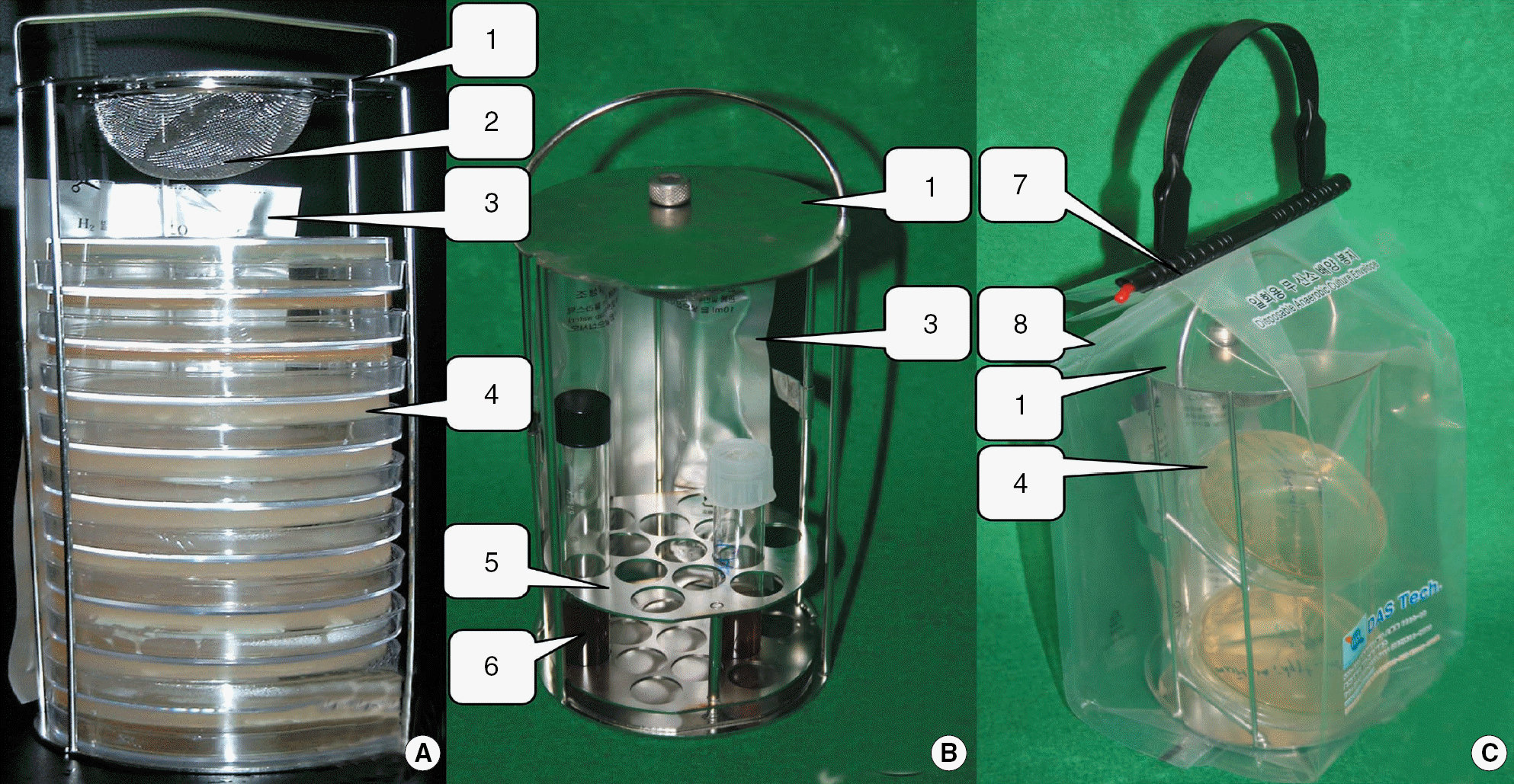Abstract
Background:
We developed a new disposable anaerobic culture system, namely, the Quick anaero-system, for easy culturing of obligate anaerobes.
Methods:
Our system consists of 3 components: 1) new disposable anaerobic gas pack, 2) disposable culture-envelope and sealer, and 3) reusable stainless plate rack with mesh containing 10 g of palladium catalyst pellets. To evaluate the efficiency of our system, we used 12 anaerobic bacteria. We prepared 2 sets of ten-fold serial dilutions of the 12 anaerobes, and inoculated these samples on Luria-Bertani (LB) broth and LB blood agar plate (LB-BAP) (BD Diagnostic Systems, USA). Each set was incubated in the Quick anaero-system (DAS Tech, Korea) and BBL GasPak jar with BD GasPak EZ Anaerobe Container System (BD Diagnostic Systems) at 35-37°C for 48 hr. The minimal inoculum size showing visible growth of 12 anaerobes when incubated in both the systems was compared.
Results:
The minimal inoculum size showing visible growth for 2 out of the 12 anaerobes in the LB broth and 9 out of the 12 anaerobes on LB-BAP was lower for the Quick anaero-system than in the BD GasPak EZ Anaerobe Container System. The mean time (±SD) required to achieve absolute anaerobic conditions of the Quick anaero-system was 17 min and 56 sec (±3 min and 25 sec).
Go to : 
REFERENCES
2.Citron DM. Specimen collection and transport, anaerobic culture techniques, and identification of anaerobes. Rev Infect Dis. 1984. 6(S1):51–8.

3.Bennett GN., Hickford JG., Zhou H. Convenient anaerobic techniques, science from the supermarket shelf. Anaerobe. 2006. 12:49–51.

Go to : 
 | Fig. 1.Features of the Quick anaero-system: Stacked media (A), tube (B), and fully assembled Quick anaero-system with 2 media on which colony formation can be observed through disposable culture-envelope (C). The components of the Quick anaero-system and consumables are indicated by numbers as follows: (1) reusable stainless plate rack with mesh containing palladium catalyst pellet; (2) palladium catalyst pellet; (3) a new disposable anaerobic gas pack; (4) culture media plate; (5) reusable stainless tube rack; (6) tube; (7) sealer; and (8) disposable culture-envelope. |
Table 1.
The results of comparison of the minimal inoculum size showing visible growth of 12 anaerobes when incubated in the Quick anaero-system and BD GasPak EZ Anaerobe Container System




 PDF
PDF ePub
ePub Citation
Citation Print
Print


 XML Download
XML Download